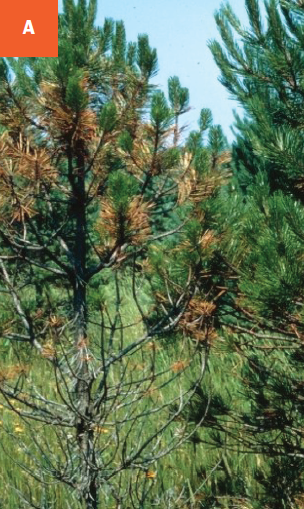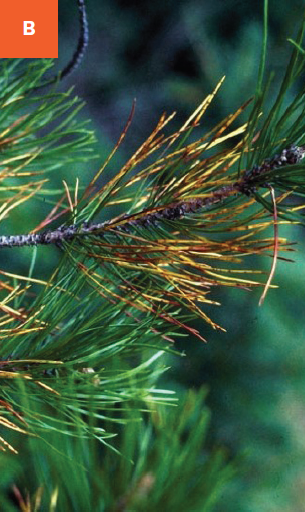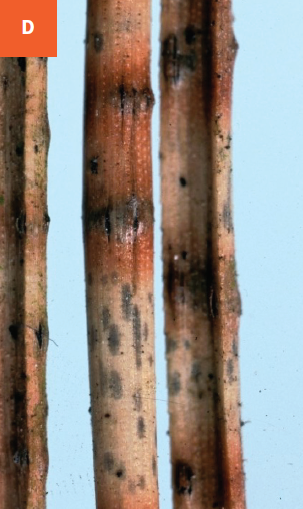Dothistroma Needle Blight
Dothistroma septosporum (syn. Mycosphaerella pini) (fungus)
HOST Austrian pine, Ponderosa pine
DAMAGE/SYMPTOMS Reddish-brown spots appear randomly on needles in late summer to fall. The spots can enlarge into reddish-brown bands and encircle the needles. The tips of infected needles turn brown as the bases stay green. As infection continues, needles die and drop off. Infection is more severe on lower branches closest to the trunk. Small black fruiting bodies might emerge out of infected needles.
DISEASE CYCLE The fungus survives in infected needles. Throughout the growing season, spores are released from affected needles and infect two- to three-year-old needles during periods of cool, wet weather. Young needles are mostly resistant until they reach maturity.
MANAGEMENT Remove fallen needles to reduce inoculum levels. Good spacing of trees will improve air circulation and minimize duration of wetness on needles. Avoid hitting the tree canopy during irrigation. Affected trees can be treated with fungicide containing the active ingredient copper. Apply fungicides in spring when new needles have grown half their mature length. A second treatment should be applied three to four weeks later when new needles are full grown. Strictly follow instructions on the pesticide labels. Fungicide applications will not cure already-infected needles but will prevent new infections.
A Pine trees affected by dothistroma needle blight. B Discolored pine needles. C Red-brown bands on infected pine needles. D Black fungal fruiting bodies emerging out of infected needles.




